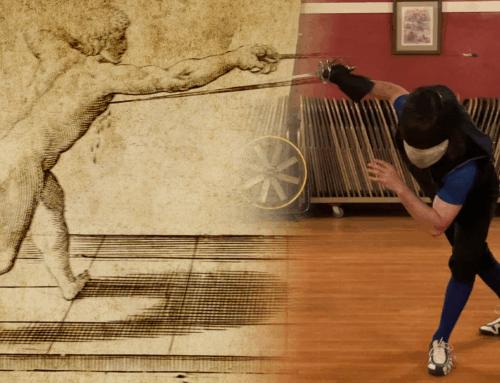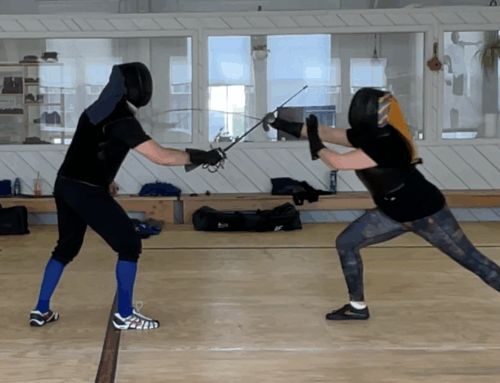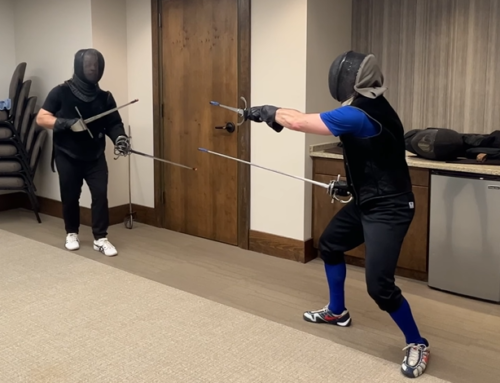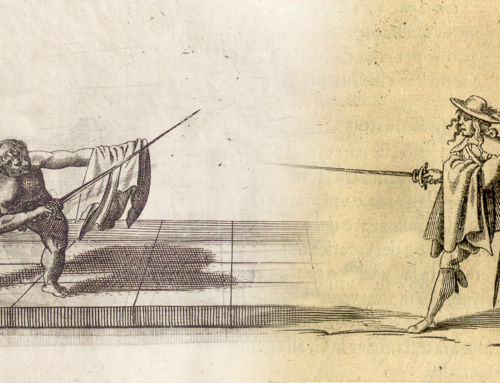A popular fencing drill among the rapier community, especially in SCA Rapier circles, is the Wall Stabbing Drill. This is where a fencing student spends several minutes extending their arm and thrusting at a target against a wall — typically relatively mindlessly and without useful instruction.
Sadly, they’re not learning anything incredibly useful.
However, we can transform this exercise into a drill that helps us and our rapier students learn an important aspect of Italian rapier — measure. By adding measure (see: distance) into this drill, we learn to use the right attack for the right measure as well as how to attack in good sequence.
The Four Measures
There are four measures in which we can attack & strike our opponent’s.
Strettisima. “Narrowest measure.” This is the measure you can strike your opponent via a simple arm extension, leaning into an offensive-posture, or a reverse lunge.
Stretta. “Narrow measure.” This is the measure in which you can strike your opponent via going into your offensive posture and then shifting your weight from your back foot to front foot.
It’s basically a lunge without the small step of the lead foot.
Larga. “Wide measure.” This is the distance in which you can strike your opponent with a small step-lunge.
Larghissima. “Widest measure.” This is the distance in which you can strike your opponent using a passing-lunge or a pass with a full turn of the hips.
Note: Larghissima isn’t a term found in any historical fencing manuals but is a term coined by Academie Duello. I like their pedagogy and have adopted this term/measure when teaching.
How to Do the Wall Stabbing Drill
- Set up a target — be it on your wall or a body form, etc. If you’re stabbing a wall in your house, I recommend creating a padded target as to not ruin your walls.
- Go through the different measures and practice striking in each of them. Make sure you’re attacking in good sequence and aren’t overextending yourself or attacking off-balance, etc. Use different guards.
Really concentrate on finding the correct distance for yourself, so you learn where you need to be in order to successfully attack your opponent in a bout. - Once you have a good hang of the different attacks and measures, mix it up. Start out of measure and step into what you think each of the four measures are and attack.
If you miss, don’t make up the distance by utilizing poor form such as leaning too far forward or letting your rear-leg pop up, etc. Either try again or make up the distance with an additional footwork (most likely a simple advance). - You can further mix it up by adding in several advances and retreats. Pick a moment to attack and see if you pick the right attack for the right measure.
The key to this solo drill, like any drills, is knowing what you’re trying to improve on. What is the goal of your drill? Stabbing a wall for 10 minutes isn’t going to teach you (or your students) a lot about fencing, but having them stab a wall while concentrating on their form and measure does. It is also a 100x more interesting of a drill that way.
Happy swording!








